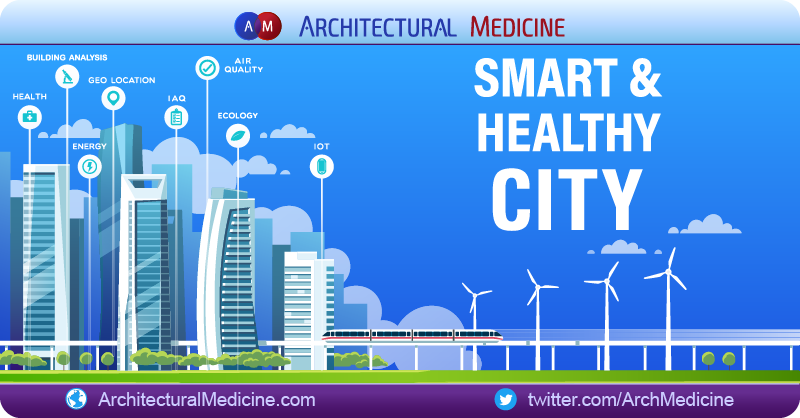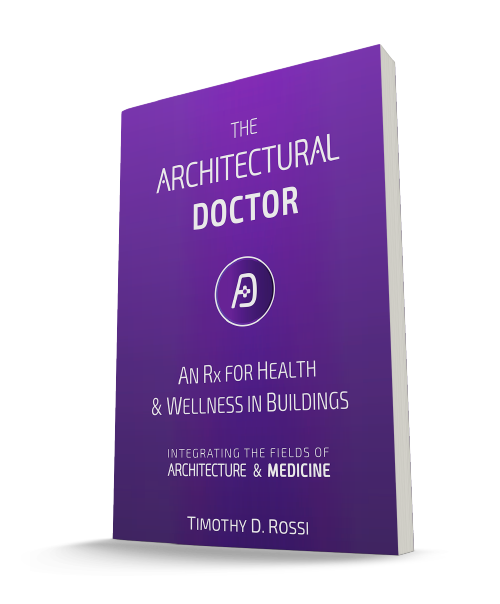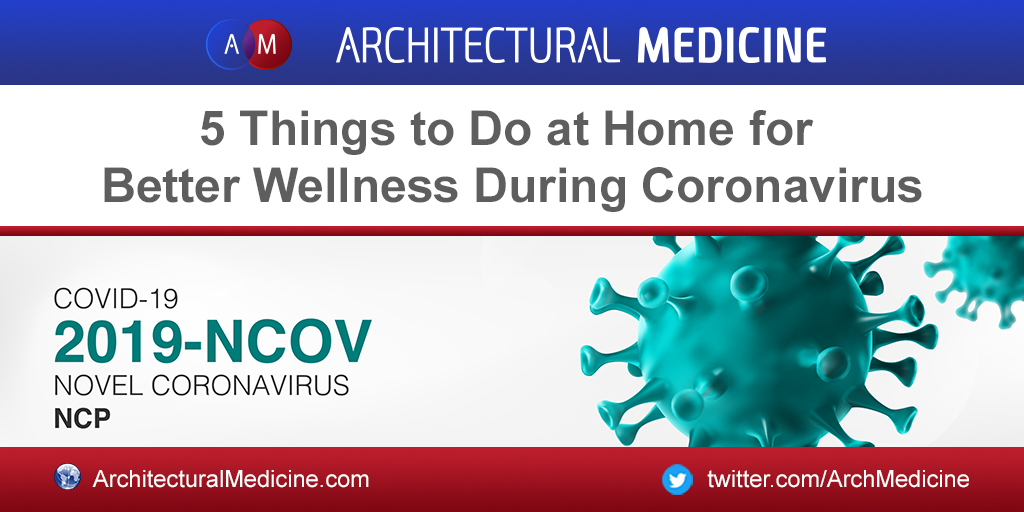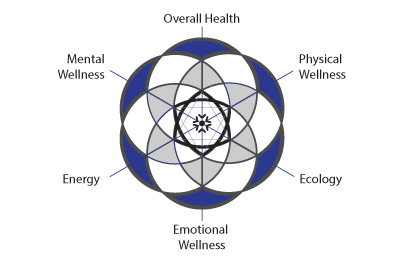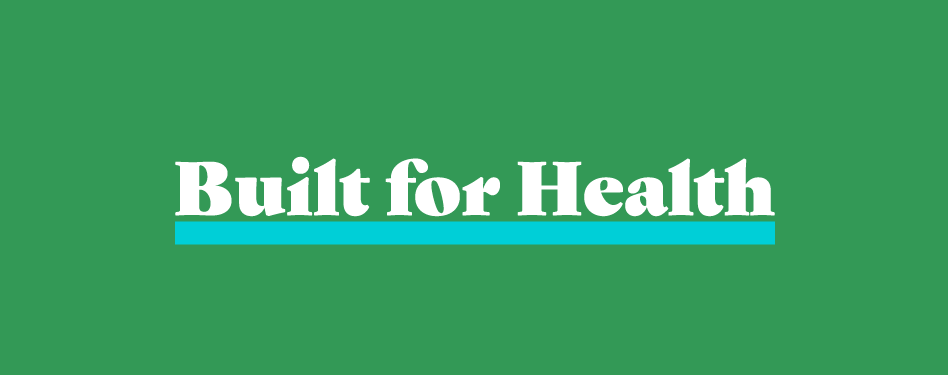Digital Twins, Smart Building Sensors, and Health in Buildings
This Is Part I of a Two-Part Series
Overview – Read Time 5-7 Minutes: In this article, the topics of building sensors (Smart Buildings) and Digital Twins will be discussed relative to occupant health in buildings.
Post-pandemic, there is certainly one aspect of buildings that almost everyone on this planet is likely to have learned — the impacts the built environment can have on health. There has been a tremendous increase in discussions that, after 30 years of being involved in the topics of buildings, I’ve never seen before on this level.
This is good news, even if this awareness may have come about from such a terrible event of the novel coronavirus. From the direct impacts on physical health from the airborne virus to the fact that many people are suffering from emotional and psychological challenges based on almost 100 percent of time spent indoors, the built environment impacts human health in many formats.
This, combined with the topics of energy efficiency, sustainability, and topics based on climate change, has shown an enormous increase in awareness of these issues. It has created numerous discussions surrounding the education of these topics, along with follow up debates as to solutions.
Utilizing New Building Ontologies for Building Sensor Metadata
When it comes to the topic of health and wellness in the built environment, on which Architectural Medicine focuses, there is still one gap that will need to be bridged in order for solutions to manifest. And this gap is the availability of data in buildings to help determine where and when issues are present, in order to take necessary actions to provide solutions.
This gathering of data, which previously has not been as available, can now be resolved by the use of two important components.
The first is the availability of modern-day sensors that can be connected to the internet of things – IoT, and the second is the ability for professionals to utilize this data for evaluating human and biological health.
While Building Management Systems (BMS) have existed for years utilizing standards and processes such as BACnet, COBie, and other building systems that gather data from building sensors, these typically have existed to examine structural infrastructure and utilities to measure the integrity of buildings, and not necessarily as a focus on topics related to health.
And because these standards had been developed decades ago, they have not had the granular capabilities to both capture this data and make it available to modern computing systems.
However, due to advances in new building ontologies, such as the Brick Schema and the Real Estate Core (REC) ontologies, these more advanced SMART building sensors can be accessed with more specificity using building metadata.
Fortunately, a recent webinar led by James McHale (Memoori.com), included Dr.Gabriel Fierro of the Brick Consortium and Dr.Karl Hammar from the RealEstateCore Consortium, where they outlined a merging of these ontologies for a more complete and supportive worldwide standard for building metadata.
REC Ontology and BRICK Schema are “merging”. This will hopefully have a high impact on modeling/describing buildings and services. Listen in on the webinar: https://t.co/hUnBJm21tX via @YouTube @RecOntology #BrickSchema #SmartBuildings
— Joakim Eriksson (@JOAKlM) August 31, 2022
Building Sensors, Digital Twins, and Building Health Metrics
How would these processes be achieved using building sensors to support human health? Good question…
These new ontologies provide the ability for every building sensor to not only be included in a building’s systems for monitoring and control, but can also be represented as a part of the building envelope. By utilizing sensor metadata that points to specific locations in the building envelope along with how they are connected to other processes and systems, they can all be viewed in one control panel for the Facility Management (FM) for building maintenance and monitoring.
And when these sensors are included in a Digital Twin (DT) setup, you now have a big picture view of an entire building, whether it be a single structure such as a house or the largest skyscraper — it can all scale from the micro to the macro. If you’re not familiar with the term, a Digital Twin is a model representation of a physical object that can monitor real-time functions while also providing simulations and a time-scaled data repository of the physical objects that they represent.
Put simply, these digital twins can show, in real time, how a physical object such as a building is functioning or dysfunctioning. When these newer sensors, which can measure air quality such as carbon dioxide, carbon monoxide, and particulates, as just a few examples, can provide a window into building occupant health that has not previously been possible. In this manner, these smart building sensors can better support health in buildings.
By utilizing a language such as the Digital Twin Definition Language (DTDL), developed by Microsoft and utilized in Azure Digital Twins, these sensors can monitor buildings in formats never before possible.
The DTDL language is based on the Real Estate Core (REC) ontology using “JSON-LD and is programming-language independent. DTDL isn’t exclusive to Azure Digital Twins, but is also used to represent device data in other IoT services such as IoT Plug and Play.”[1] Because this language is utilizing modern JSON, it can utilize the metadata of these sensors, which can then be ingested into a digital twin and represented to monitor the many facets of a building’s status. Due to this building metadata, the sensors can be related to specific building locations, rooms, and points in the building, providing specific measurements for all locations throughout the building.
The Brick Schema and Real Estate Core ontologies provide precise information for each sensor in relation to other facets of the building components. This potential for data to be related in an integrated nodal format provides insights through metadata that previously have been challenging and complex to achieve in Building Management Systems (BMS).
With this format, these sensors can be used for monitoring human health in buildings, and not just the health of the building’s utilities. Of course, there is a tremendous amount of overlap, and as such, many different facets of building functions can become more manageable.
Real-time monitoring of a building’s systems is critical, yet there is another facet of these processes that have had limited utilization, and that is long-term monitoring of building systems in evaluating occupant health.
The Building Informaticist and the Healthy Building Inspector
In previous articles, I’ve discussed the topics of the Building Informaticist and the Healthy Building Inspector. Both of these professionals will be critical to ensure that the Architectural Medicine System (AMS) can be utilized for whole systems solutions.
The Healthy Building Inspector will be important in areas where sensors and on-site devices cannot provide proper analysis. This might include measurements of biological substances, from bacteria and molds to viruses, as well as a wide range of particulates, VOCs, and chemical substances that current-day sensors cannot easily measure.
The Building Informaticist is also critical for gathering environmental and building data, such as Social Determinants of Health (SDoH) inquiries and the ability to evaluate building data that is provided by the Healthy Building Inspector, the on-site sensors, or a combination of them both.
While the Healthy Building Inspector may gather the data, the Building Informaticist plays an important role in evaluating data for both short and long-term informatics. They are responsible for the big data of buildings related to the occupants and public health in general.
Conclusion
The topics of health and wellness in the built environment are becoming more commonplace in our post-pandemic world in both residential and commercial buildings. Topics of physical health as well as emotional and psychological well-being, especially based on Neuroscience in Architecture, will continue to receive the attention it deserves for better patient and public health.
When these building sensors are included in a larger city context, then sensors on both the exterior of buildings as well as inside the building envelope, can provide a very complex, complete metric of real-time city information for better public health.
I will continue the exploration of these topics and potentials in Part II of this series:
Part II – Building Digital Twins, Medical Digital Twins, and the Architectural Doctor’s Role in Analyzing Building Health Metrics
All of these discussions are part of the upcoming book “The Architectural Doctor”, which will be published in November 2022. For more information on the book, please click here.

